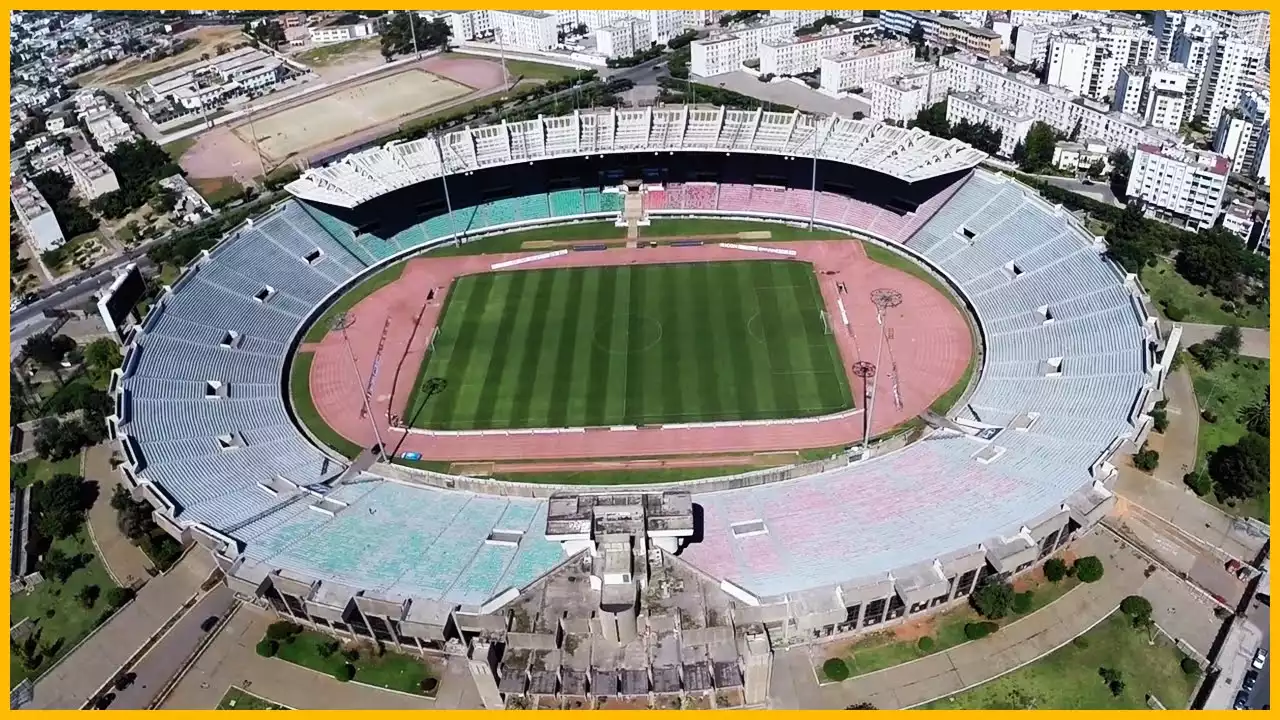Importance of architectural design in sports venues
The architectural design of sports venues plays a crucial role in creating an unforgettable experience for spectators and athletes alike. A well-designed stadium can amplify the excitement of the game and provide a sense of belonging and pride to the host nation. The choice of materials, layout, and overall aesthetic of the venue can greatly impact the atmosphere and ambiance during matches. Additionally, a well-designed stadium can maximize seating capacity, ensure safety and security, and optimize acoustics for an extraordinary audiovisual experience. The architectural design of AFCON venues is a reflection of the host country's commitment to providing world-class facilities for the tournament.
Historical overview of AFCON venues
Over the years, AFCON has been hosted in various countries across Africa, each leaving its mark on the tournament's architectural landscape. The first edition of AFCON was held in Sudan in 1957, with the venue being the Khartoum Stadium, a simple yet functional structure. Since then, the tournament has been hosted in numerous countries, including Ghana, Ethiopia, Nigeria, and South Africa. Each host country has embraced the opportunity to showcase its architectural heritage through the design and construction of the tournament venues, resulting in a diverse range of architectural styles and influences.
Key considerations in designing AFCON venues
Designing an AFCON venue involves careful consideration of several key factors. Firstly, the capacity of the stadium must be sufficient to accommodate the expected number of spectators while adhering to safety regulations. Accessibility is also crucial, with the need to provide adequate facilities for people with disabilities and convenient transportation options for fans. The climate and weather conditions of the host country must be taken into account to ensure spectator comfort, whether through the provision of shade or climate control systems. Additionally, the design should prioritize sustainability, incorporating energy-efficient practices and using eco-friendly materials.
Iconic AFCON venues and their architectural features
Several AFCON venues have gained international recognition for their unique architectural features. The Cairo International Stadium in Egypt, for example, is an impressive structure that can hold over 70,000 spectators. Its futuristic design, with its sweeping curves and modernist elements, is a symbol of technological progress and innovation. The Stade de l'Amitié in Gabon, on the other hand, showcases a blend of modern and traditional architectural elements, with its striking red roof inspired by traditional Gabonese architecture. Other notable venues include the Moses Mabhida Stadium in South Africa, which features a breathtaking arch that spans the stadium, and the Stade du 4 Août in Burkina Faso, renowned for its unique circular design.
Sustainable design practices in AFCON venues
In recent years, there has been a growing emphasis on sustainability in the design and construction of AFCON venues. Many host countries have recognized the importance of minimizing the environmental impact of these structures and have incorporated sustainable design practices into their plans. This includes the use of renewable energy sources, such as solar panels, and the implementation of water conservation measures. Additionally, sustainable materials and construction techniques are being prioritized to reduce waste and carbon emissions. The integration of sustainable design practices in AFCON venues not only benefits the environment but also sets a positive example for future sporting events.
Technology integration in AFCON venue architecture
The advancement of technology has revolutionized the way AFCON venues are designed and experienced. From state-of-the-art audiovisual systems that enhance the spectator experience to cutting-edge security measures that ensure the safety of all attendees, technology plays a crucial role in the architecture of these venues. High-definition video screens, interactive displays, and immersive sound systems create an engaging and immersive atmosphere, while advanced surveillance systems and access control technologies enhance security. Additionally, technology is utilized behind the scenes to improve operational efficiency, with smart stadium management systems that monitor energy usage, crowd flow, and facility maintenance.
Challenges faced in designing AFCON venues
Designing AFCON venues comes with its fair share of challenges. One of the primary considerations is the tight timeline within which these stadiums need to be constructed. Hosting the tournament requires significant infrastructure development, and delays can have far-reaching consequences. Additionally, the availability of skilled labor and resources can pose challenges, particularly in countries with limited construction capabilities. Balancing the desire for architectural innovation with the practicalities of construction and budget constraints is another hurdle that architects and designers must overcome. Despite these challenges, the commitment and determination of host nations have resulted in remarkable stadiums that leave lasting impressions.
Future trends in AFCON venue architecture
As technology continues to evolve, the architecture of AFCON venues is expected to embrace new trends and innovations. The integration of sustainable design practices is likely to become even more prevalent, with a focus on carbon neutrality and reduced environmental impact. The use of augmented reality and virtual reality technologies may also enhance the spectator experience, allowing fans to immerse themselves in the game like never before. Additionally, the flexibility and adaptability of venues to accommodate different sports and events are becoming increasingly important, ensuring that these structures remain relevant and functional beyond the AFCON tournament.
Impact of architectural design on the AFCON experience
The architectural design of AFCON venues plays a significant role in shaping the overall experience for players, spectators, and host nations. These stadiums become symbols of national pride and unity, reflecting the cultural heritage and architectural prowess of the host country. The awe-inspiring structures create an atmosphere of excitement and anticipation, enhancing the passion and fervor of the matches. The design elements, from the layout to the choice of materials, contribute to the comfort and enjoyment of spectators, ensuring they have an unforgettable experience. The impact of architectural design extends beyond the tournament itself, leaving a lasting legacy and serving as a catalyst for urban development and tourism.
The architecture of AFCON venues is a fusion of art, culture, and design. These iconic structures not only host thrilling matches but also showcase the architectural prowess of the host nation. From historical stadiums to modern marvels, AFCON venues are designed with functionality, sustainability, and spectator experience in mind. The integration of technology further enhances the overall event experience, while the challenges faced in designing these venues only highlight the determination and commitment of host nations. As AFCON continues to evolve, the future of venue architecture holds exciting possibilities, promising even more remarkable structures that leave an indelible mark on the sporting world and architectural enthusiasts alike.










